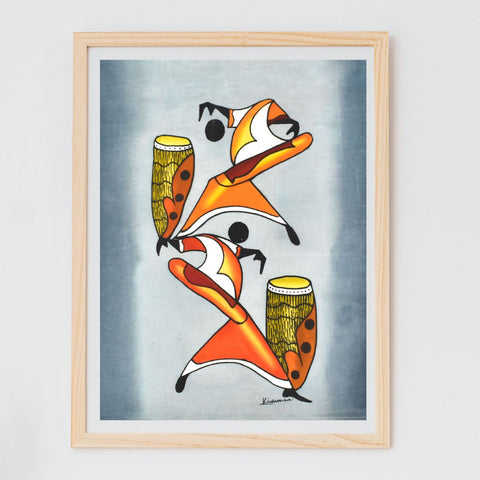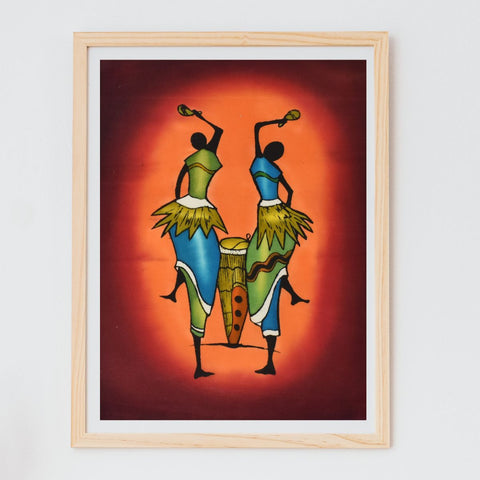Painting Alongside Kenyan Artists: The World of Batik Paintings
Batik paintings are a mesmerizing form of art that originated in Indonesia and have captivated people around the world with their intricate designs and vibrant colors. Rooted in a centuries-old tradition, batik paintings are much more than just decorative pieces; they are a testament to the skill, creativity, and cultural heritage of the artisans who create them.
Our collection of Batik paintings here at Africa Direct originate from Kenyan artists using the traditional Batik-making techniques. Crafted on 100% medium to heavy African cotton canvas, these unique paintings showcase the meticulous artistry of Kenyan artists with notable example being the unframed, pastel, paint, and ink batik. Created through a free-hand process, each piece is a one-of-a-king masterpiece, despite adhering to standard templates of drummers, dancers, gatherers, and portraits.
Batik is wax-resist dyeing technique used to create intricate patterns on fabric. The process involves applying wax to the fabric in specific areas to prevent the dye from penetrating, resulting in beautifully detailed designs. This ancient art form has been practiced for generations in countries like Indonesia, Malaysia, India, and Kenya, with each region adding its own unique style and symbolism to the craft.
Creating a batik painting requires a delicate balance of skill and creativity. Artisans use a variety of tools, including tjanting (a tool for applying wax), brushes, and stamps to apply wax to the fabric. Once the wax has been applied, the fabric is dyed in vibrant colors of red, green, yellow, blue, among many others. Artists would add multiple layers of wax and dye to create their intricate designs and patterns. Finally, the wax is removed to reveal the finished batik painting, which may be further embellished with additional details or embellishments.
Batik paintings often feature a wide range of themes and motifs, ranging from nature to everyday life and cultural traditions. Common motifs include musical instruments, animals, geometric patterns, and everyday scenes or folk tales. These motifs are not just decorative but also carry deep cultural and symbolic meanings, reflecting beliefs, values, and traditions of the communities that create them.
While traditional batik paintings continue to be revered for their beauty and craftmanship, contemporary artists are also pushing the boundaries of the art form, experimenting with new techniques, materials and styles. From abstract compositions to modern interpretations of traditional motifs, contemporary batik paintings offer a fresh perspective on this ancient art form, attracting new audiences and expanding the boundaries of creativity.
As the world becomes increasingly interconnected, the importance of preserving traditional crafts like batik painting becomes more apparent. Organizations and initiatives dedicated to preserving and promoting batik painting are working tirelessly to ensure that this ancient art form continues to thrive for generations to come. By supporting artisans, educating the public, and celebrating the beauty and cultural significance of batik paintings, we can help ensure that this vibrant tradition remains alive and vibrant for centuries to come.






